If you’re a meat eater, then the odds are you already know that bone broth (or stock, as we call it back home) is not only a great foundation for many dishes, but is recognized for its healing powers. In fact, broth holds a special place in many cultures, bringing the likes of Chinese, Jewish and Italian kitchens together despite their geographic separation and varying ingredients. So if you’d like to know how to make yummy, healthful broth at home, here are five simple steps.
Ingredients
– Chicken or beef bones – as many as you can get your hands on. You can either use uncooked bones, or a roast chicken carcass. You can always keep leftover bones in the freezer until you have enough to make stock
– 1-2 carrots; a couple of sticks of celery, an onion halved (including the skin as this will add a nice color to your stock) and anything else you have to hand (I used fennel off-cuts in mine)
– 2-3 whole peppercorns
– Salt (kosher)
– Bouquet garni or dried/fresh herbs of your choosing (thyme, rosemary, oregano, bay leaf are good choices)
– Filtered water
– 1/4 cup of apple cider vinegar (this helps to extract the collagen)
– A HUGE stock pot to cook it all in
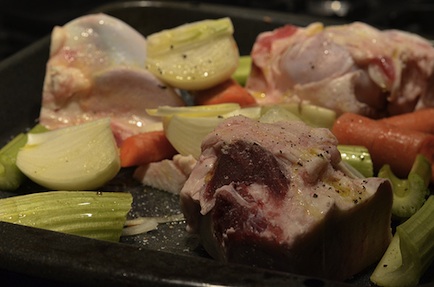
1. On this occasion, I used beef bones that I bought from the butcher at Wholefoods and because they were raw, I roasted them with the vegetables for about 30 minutes in a medium heat (350-375 degrees Farenheit). Be sure to season with salt and pepper and liberally slug some olive oil over the bones and veggies before popping them in the oven. Roasting caramelizes everything and helps to add a depth of flavor.
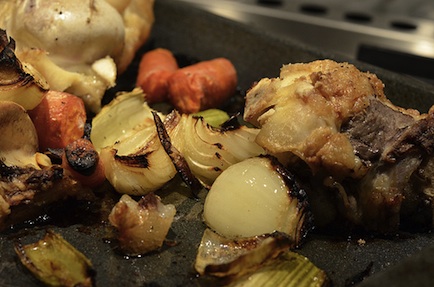
2. Once roasted, I put everything into my stock pot and generously covered with filtered water and the apple cider vinegar. The pot was about 3/4 full. Add salt (as ever, more than you think), peppercorns and herbs and bring to the boil. If you’re using a chicken carcass or other cooked bones, just add the uncooked vegetables to the water at this stage.
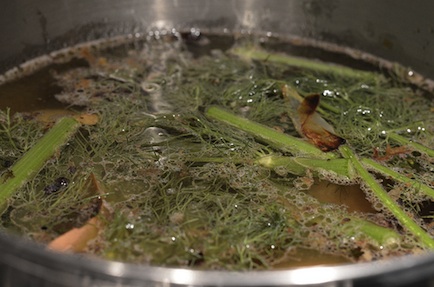
3. After your broth comes to a steady boil, turn down the heat to maintain a low simmer and leave on the stove for at least three hours, preferably longer. Samin Nosrat says that she leaves hers on the stove overnight, but given my bad luck (I once had to call out the fire department when I burnt a pan dry on the stove and filled the house with smoke at 2am) I make sure the gas isn’t burning when I’m sleeping!
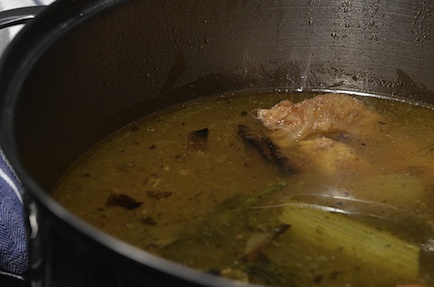
4. After turning off the heat, leave the pan to cool on the stove. This can take a good few hours. This is also a good time to taste the broth and check to see whether you need to add more salt.
5. Once the broth is cool, strain into a clean bowl and if you want skim off the fat (although I don’t recommend it) leave to stand in a cool place until the fat forms a layer on top. Afterwards, I typically divide the broth into containers of varying sizes – from a small yoghurt pot to a two-quart tupperware tub – and then freeze it. This way I can always have quality broth on hand whenever I want to make fresh soup, blended or otherwise, grain-based dishes like risotto, or even just sip a mug of hot broth which is perfect to combat that 3pm energy slump and is supposed to be great for weight loss.
Note: I’ve recently read that you can use the bones as many as three times to make broth. You’ll find it gets weaker each time but I’ve started to use each set of bones at least twice so I never run out of this elixir. You will need to discard the vegetables and add fresh ones, along with the herbs for each boiling.

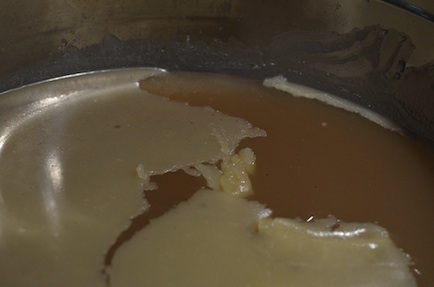


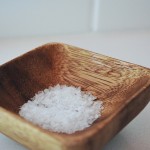

Leave a Reply